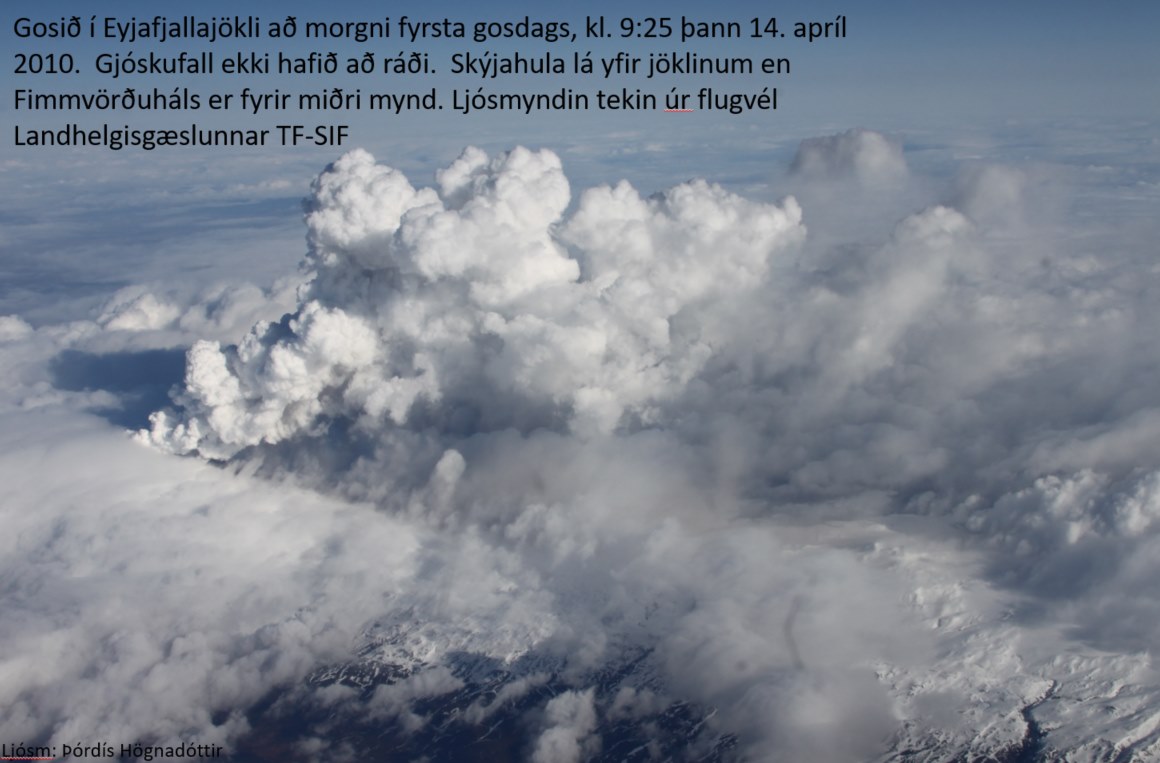"The Fimmvörðuháls eruption ended on 12 April, the same day as Althing published its report on the lead up to the economic crash in 2008. But this was not the end of the story. At 11 pm on the evening of 13 April, a wave of violent seismic activity began under the summit crater on Eyjafjallajökull. This wave continued for around two and a half hours. It subsided and our equipment began to detect a disturbance. An eruption had started under the almost 200 m thick layer of ice on Eyjafjallajökull."
So ends the first article that Magnús Tumi Guðmundsson, professor at the University of Iceland Faculty of Earth Sciences, wrote on the Institute of Earth Sciences Facebook page, on the occasion of the tenth anniversary of the Eyjafjallajökull eruption.
In this first article of the four that Magnús Tumi intends to publish on the Facebook page, he discusses the global impact of the eruption. "This eruption had a greater global impact than any eruption in Iceland since the Skaftá Fires in 1783. Flights in Europe and over the North Atlantic were mostly cancelled for several days due to the fine volcanic ash carried by a north westerly wind towards Europe," says Magnús Tumi, who along with his colleagues, was at the vanguard of the research and advised the Department of Civil Protection during the eruption.
He points out that although the eruption was not particularly violent, it was protracted and the prevailing winds carried the ash south and south east. "In volcanology, the Eyjafjallajökull eruption is one of the most major events in recent decades," says Magnús Tumi and refers to the impact on air travel.
"This eruption had a greater global impact than any eruption in Iceland since the Skaftá Fires in 1783. Flights in Europe and over the North Atlantic were mostly cancelled for several days due to the fine volcanic ash carried by a north westerly wind towards Europe," says Magnús Tumi, professor at the University of Iceland Faculty of Earth Sciences.

The Eyjafjallajökull eruption had a huge impact on the development of volcano research
The impact of the eruption was felt not only in the skies and on the earth, but also in the scientific community. "A cursory look at the Web of Science shows that in the past 10 years, 208 articles have been published in international peer-reviewed journals with 'Eyjafjallajökull' in the title. This is comparable to the combined number of articles with Katla, Hekla, Grímsvötn, Bárðarbunga, Askja or Krafla in the title published during the same period. The number of citations for articles about Eyjafjallajökull is also much higher than the combined number of citations for all articles about the other volcanoes during the same period. Although the number of articles and citations does not tell the whole story, most people agree that the Eyjafjallajökull eruption in 2010 has had a greater impact on the development of volcano research than most other eruptions in the last decade."
Warning signs before the eruption
Magnús Tumi also points out there were warning signs before the eruption, since both GPS measurements and interference measurements taken at the beginning of 2010 showed expansion in the region, as well as an increase in seismic activity. "We were all on tenterhooks from the beginning of March. The expansion was rapid and there were thousands of earthquakes. Magma moved east towards Fimmvörðuháls. It was on the evening of 20 March that people in Fljótshlíð spotted fire on Fimmvörðuháls. Unusually, the start of the eruption was not evident from the seismographs. Later that night when scientists managed to observe the eruption from the air, it became apparent that there had been no warning due to how small the eruption was," says Magnús Tumi of the forerunner to Eyjafjallajökull, the eruption in Fimmvörðuháls. "The craters were along a fissure, about 500 m long, on the north side of Fimmvörðuháls between Eyjafjallajökull and Mýrdalsjökull. The eruption did not cause a glacial outburst flood and there was hardly any ashfall. But there is no doubt that this was the most significant tourist eruption ever known in Iceland."
Magnús Tumi's article in its entirety is available on the Institute of Earth Sciences Facebook page. Further articles will be published on the page over the next few days.




